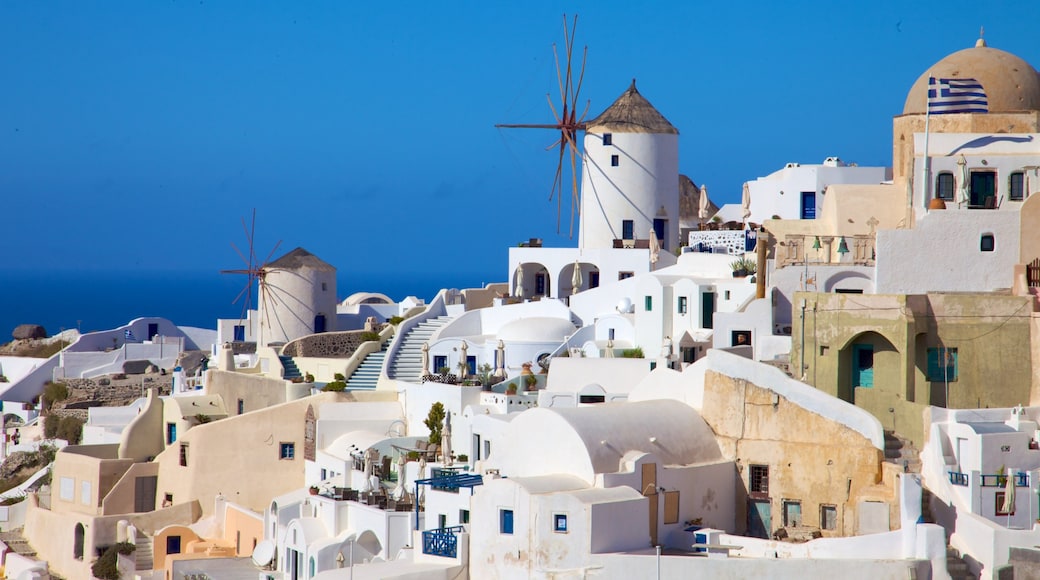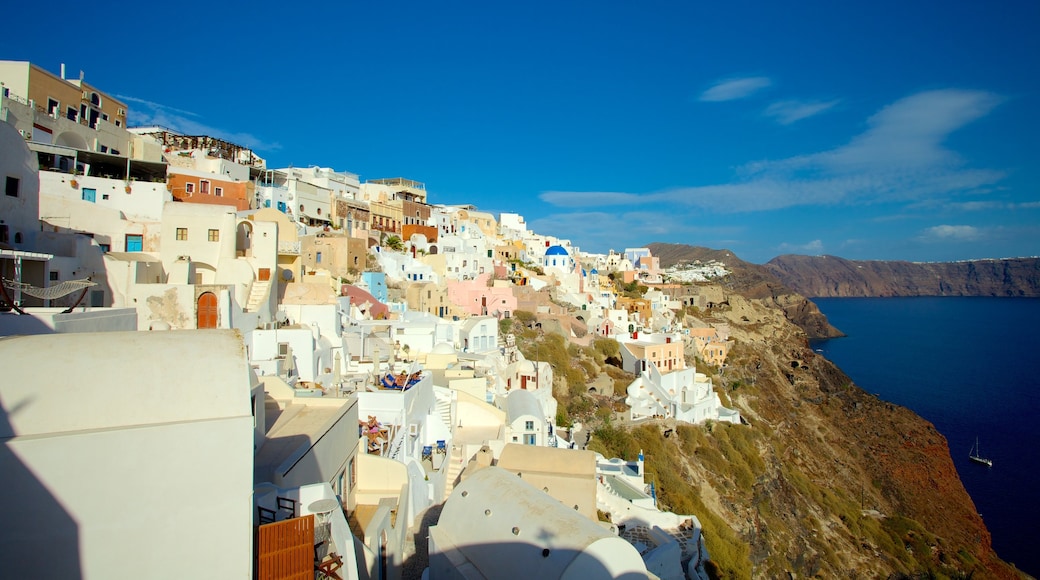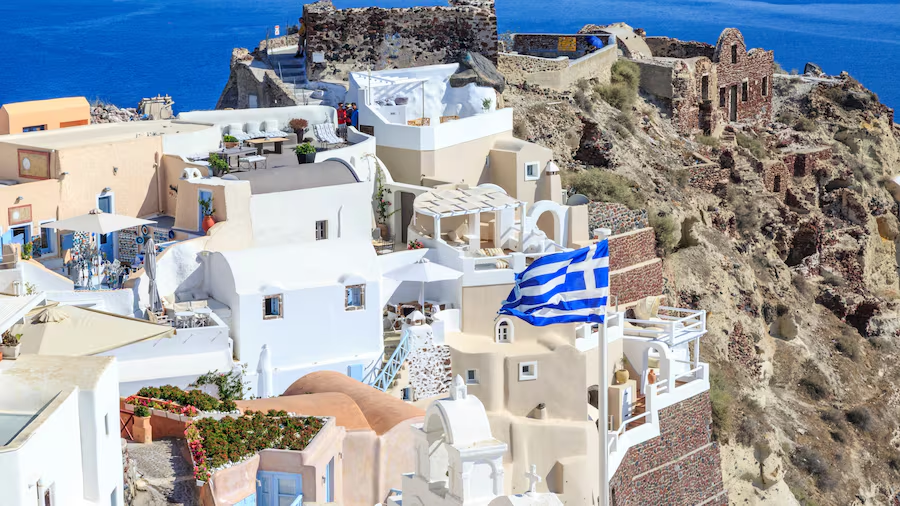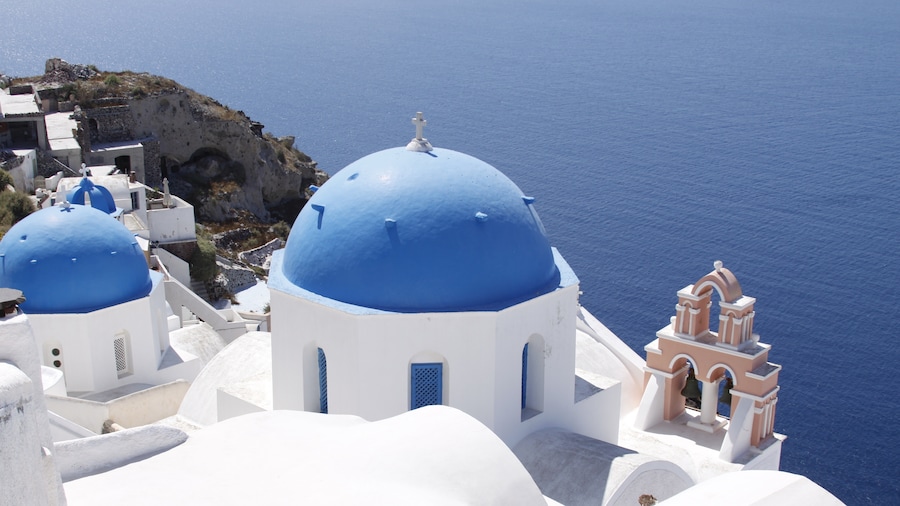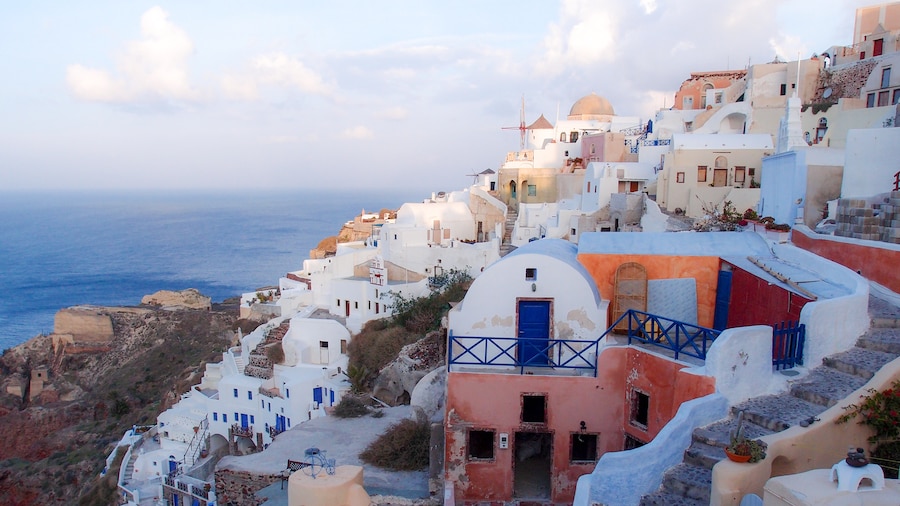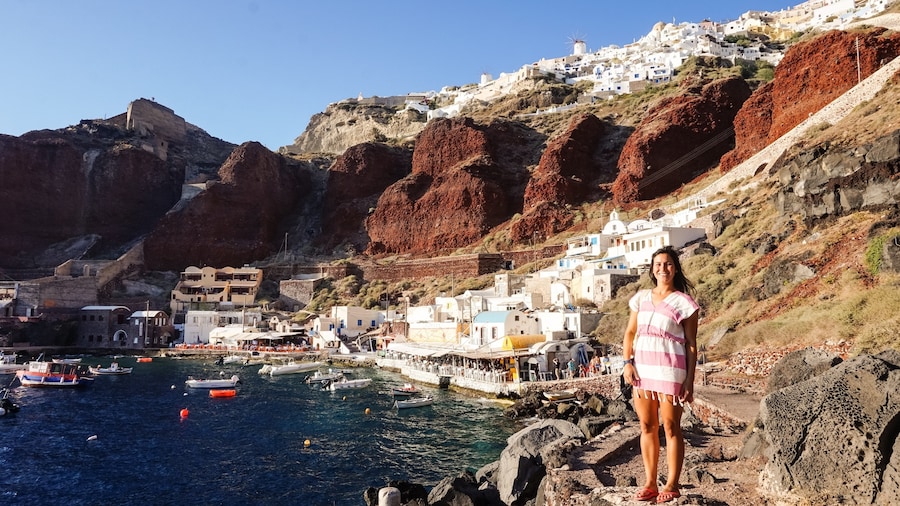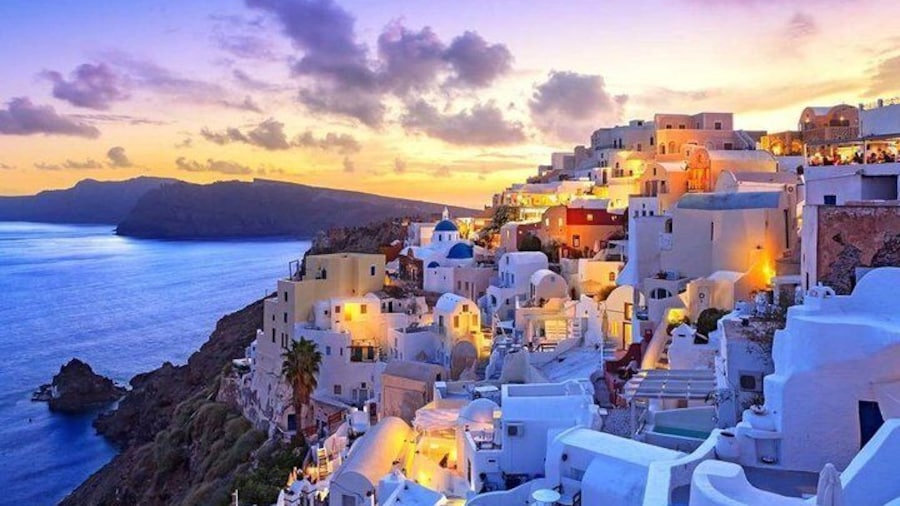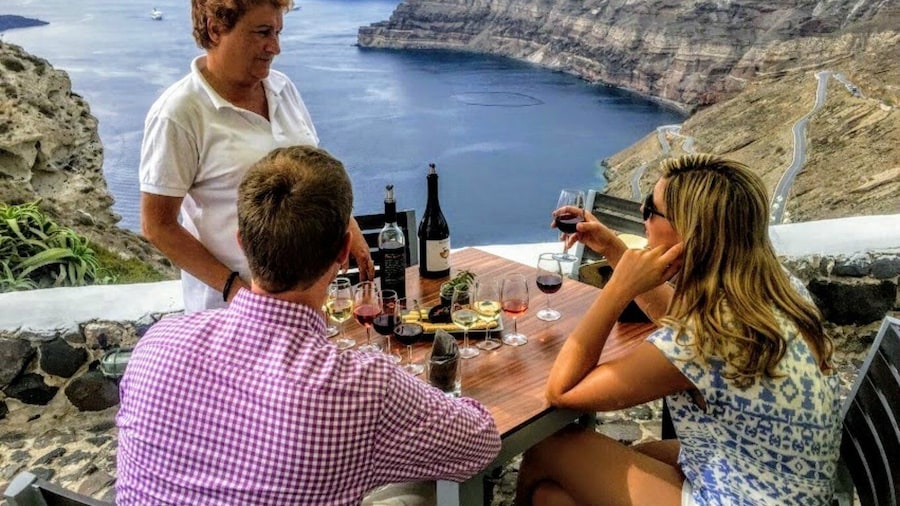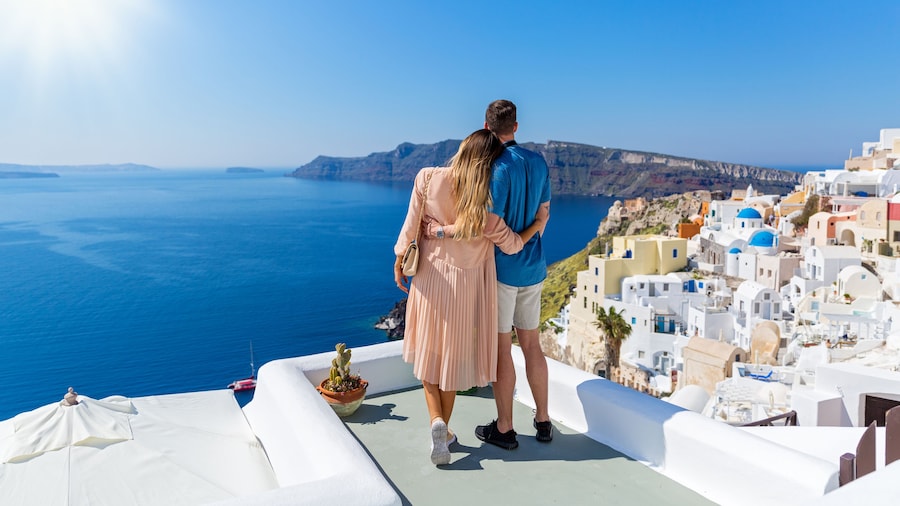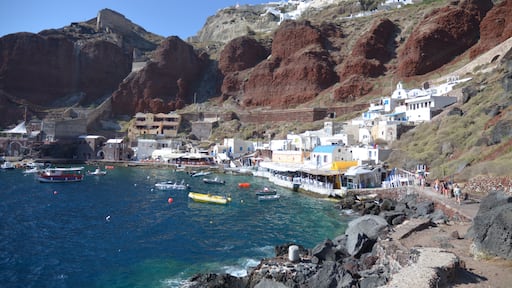This cliff-topped village is at the pinnacle of the visual drama of Santorini, with its striking white-and-blue homes, windmills and churches.
On an island of unsurpassed drama and incredible vistas, it is Oia – on the northern tip of Santorini's crescent-shaped sliver of land – that takes the prize. You could put that down to fortunate geography – Oia faces over the open western horizon, ready to scoop up the dying sunlight, as the sun slips into the sea. You could put it down to an innate architectural genius, which saw the villagers dig their homes into the hillside, becoming an organic part of those razor cliffs. Or you could put it down to several pots of home-made lime paint.It is the vibrant mix of colours splashed over the simple cubes and domes of Oia's homes, that make it such a striking sight from a distance – a spill of white, on the old volcano's red-rusted slopes. Once you're in the village, the full palette of that paint work is seen – a bold canvas of blazing whites, patterned pastels and the deep-marine blues. But pretty as it is, the paint used here is also very practical.Santorini is an exceptionally dry island, the only place in Europe classed with a desert climate. The slick painted surfaces of its rounded roofs and channels are actually designed to capture every last rain and dew drop. The locals have also been careful to harvest another of Santorini's precious resources – the wind – gifting visitors with those iconic traditional windmills, which naturally find a place into every photo of Oia. Oia does have other attractions, aside from its own exceptional beauty. There are art galleries, restored churches, a naval museum and a weaving mill – Oia didn't always depend on tourists for a living. But the most popular place to be, especially at sunset, is the part-ruined castle of Fort Londsa. As the highest point in the village, it has an uninterrupted view across the whole village – and the whole horizon. It is here you can make your picture of Oia perfect.


